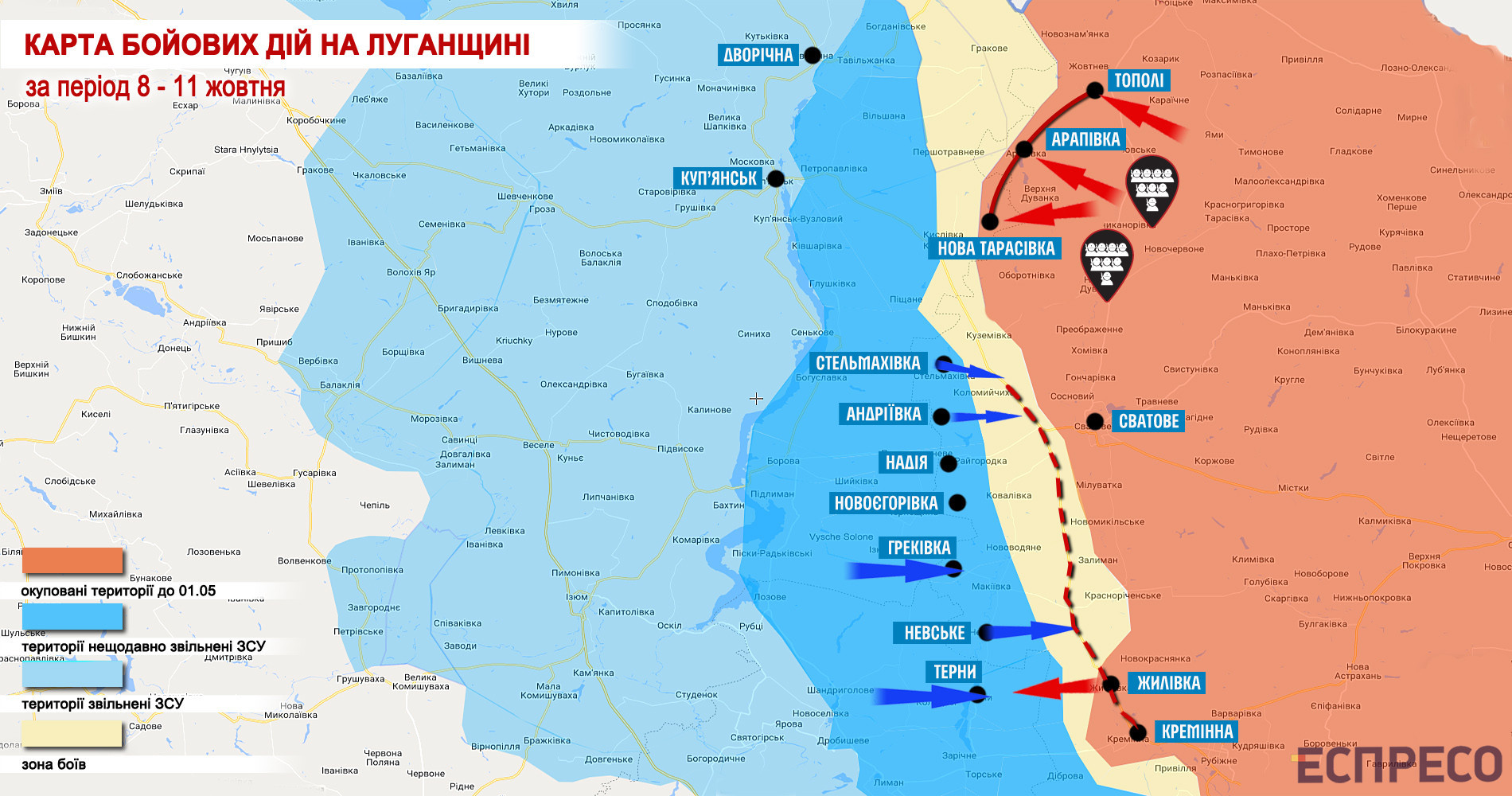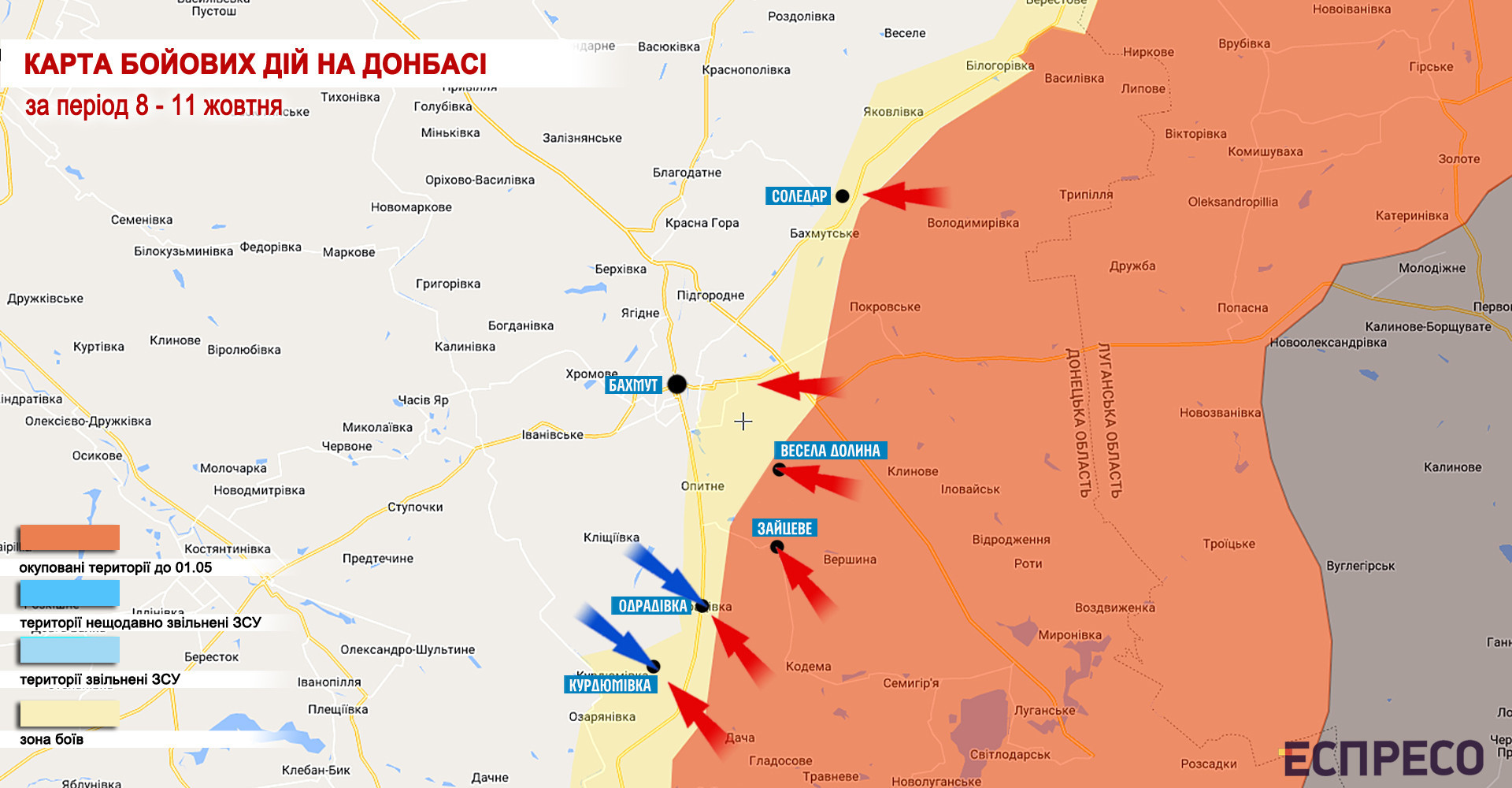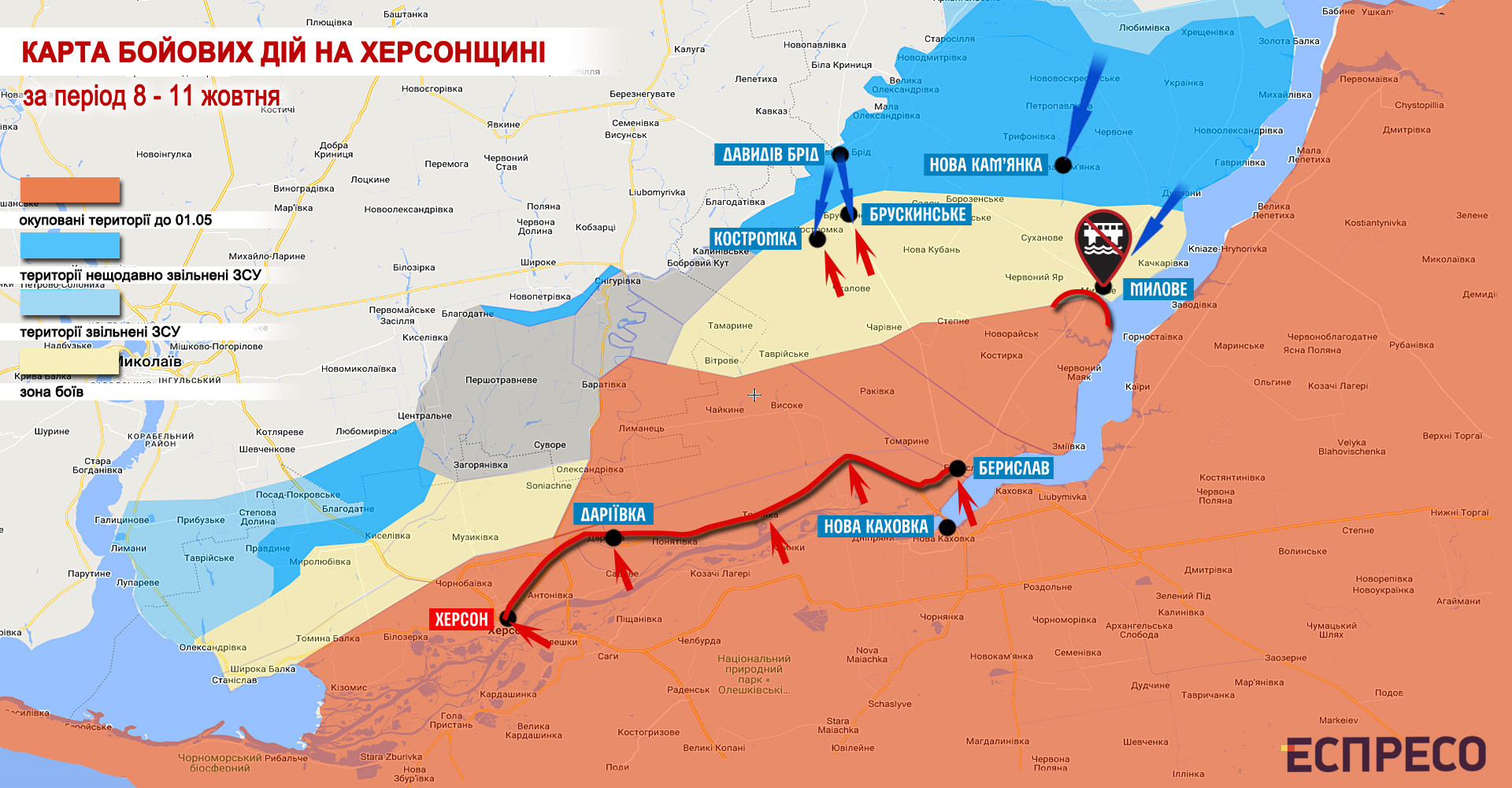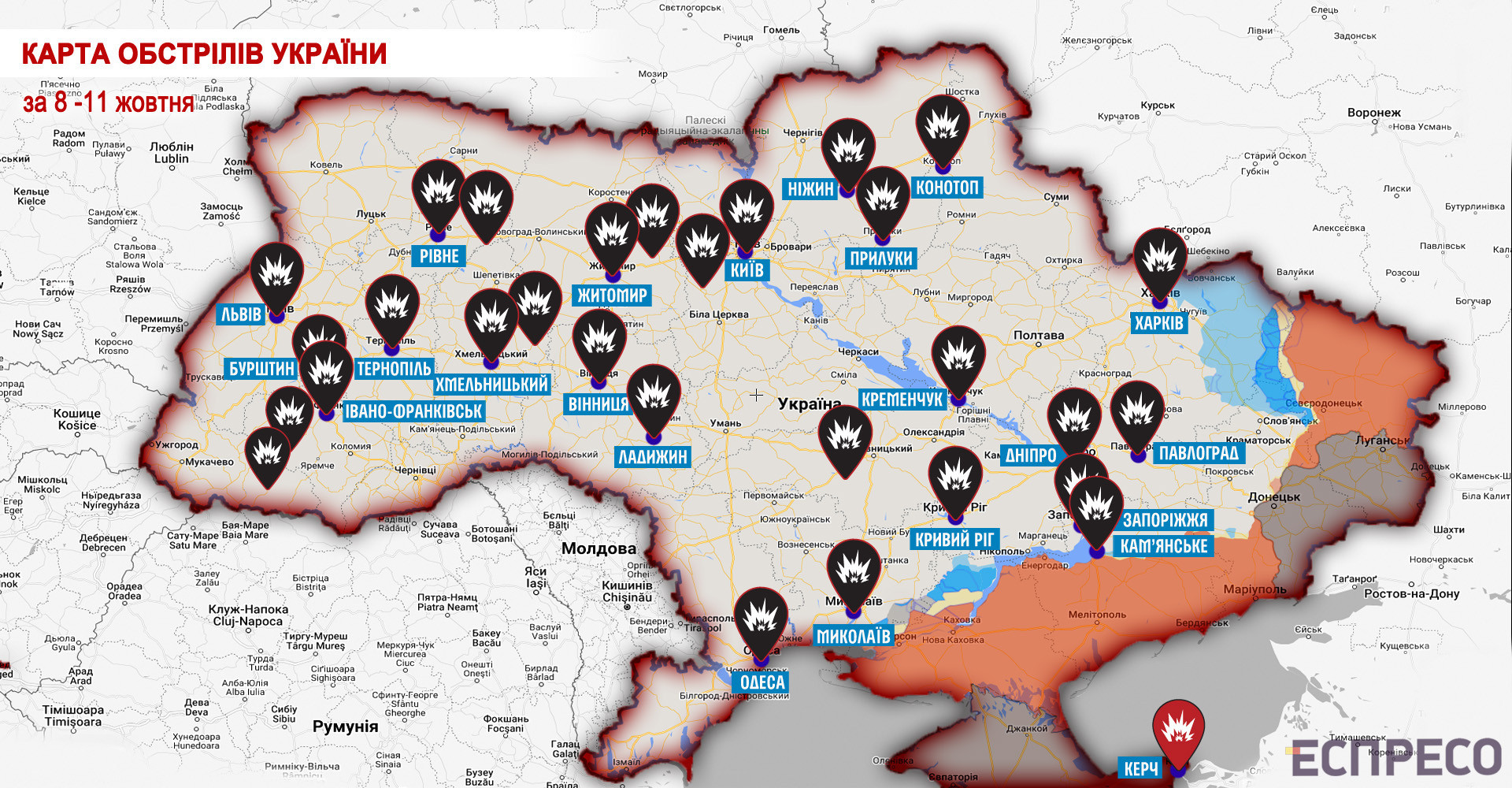
Ukraine's Armed Forces change dynamics in their favor: Serhii Zgurets' column
Ukraine's Armed Forces hold the strategic and tactical initiative, and in some areas repel Russian strikes and defend Ukrainian borders. The largest war since the Second World War is ongoing on the territory of Ukraine
Frontline dynamics over the past four days
Missile terrorism had no effect on the events at the front. The Ukrainian Armed Forces' offensive has somewhat slowed down the pace in the Luhansk and Kherson regions, and the Russian enemy is trying to build a new frontline and launch a counteroffensive.
Luhansk region
The situation remains most acute in the area of the P-66 highway between Kreminna and Svatove. The road is under close fire control of Ukraine's Armed Forces and has not been completely cut yet. The other day, the Russian forces tried to repel the Ukrainian army and counterattacked in the area of the village of Terny. However, the offensive was repulsed, and the invading Russian forces suffered significant losses and retreated to the area of the villages of Chervonpopivka and Zhytlivka, which are 5-10 km north of Kreminna. Our soldiers took advantage of this situation and liberated a number of villages at a distance of 30 km between Terny and Svatove, including Nevske, Hrekivka, Novoehorivka, Andriivka, Stelmakhivka, and Nadia.

The latter is located 15 km from Svatove. Between the liberated villages and the P-66 highway, there is a significant area that is in the gray zone. The Russian enemy does not control it, and the Ukrainian Defense Forces are constantly trying to advance further east. At the same time, in the Svatove area and further north to the Russian border, the Russian troops have drawn up powerful forces and are forming a shock fist with the aim of attacking Kupiansk and Dvorichna. It is in this area that Ukraine's Armed Forces have advanced the least to the east, and the enemy is able to quickly draw resources abroad. So far, the Russian soldiers are building defenses along the Volodymyrivka - Nova Tarasivka - Arapivka - Topoli line, in order to reliably protect the logistics artery Troitske - Svatove.
Donetsk region
The situation in the Bakhmut and Soledar directions remains the tensest in the Donetsk region. Invading Russian forces have been unsuccessfully storming the outskirts of these cities for the second month, and are also trying to bypass Bakhmut from the south, where they had partial success the other day. In particular, they seized Zaitseve and Vesela Dolyna. Other enemy attacks on Kurdyumivka and Odradivka were repulsed by the Ukrainian Defense Forces.

At the same time, it is here that the enemy is concentrating its most combat-ready resources. Bakhmut will be the stumbling block against which Putin's army will finally break its teeth.
Kherson region
The Ukrainian Armed Forces' rapid offensive, which lasted all last week, lost pace, because in this territory the Russian forces had been building several lines of defense, including reinforced concrete structures, for six months. Despite the fact that the invaders managed to retreat to the prepared positions, their situation has significantly worsened, and therefore they are already blowing up bridges even in the positions they occupy, as happened in Milovo, in order to prevent the Ukrainian army from quickly advancing to Nova Kakhovka.

However, the Russian public claims that the Russians are intensively preparing the last line of defense: Beryslav - Darivka - Kherson, and this may indicate that they themselves do not believe that they will be able to hold off the offensive of Ukraine's Armed Forces for a long time. So far, the other day, Ukrainian soldiers managed to liberate Nova Kamianka. Heavy fighting continues along the road Davydiv Brid - Beryslav, in the area of the villages of Bruskinske and Kostromka.
Missile terrorism
On October 8, after the explosion, several parts of the Crimean bridge fell into the sea. And only after 48 hours of preparation, the Russian fascists were able to gather the resources to take revenge for such an unexpected and significant blow to their pride and reputation. The Russian forces launched more than 100 missiles at our cities, of which 61 were shot down by our air defense systems, and another 24 drones did not reach their targets.

On the first day of the large-scale attack, 11 people were killed. Russian missiles hit 100 targets in all regions except Cherkasy, Chernivtsi, and Volyn. The Russian missile strikes on October 10-11 became the largest since February 24, when 160 missiles were launched over our country. However, Ukraine survived them much more calmly and with fewer consequences for people and infrastructure.
The sixth meeting in the Ramstein format
For victories on the battlefield, we need more weapons on time and for the missions planned by our military leadership. It is in this sense that we are considering the next meeting of defense ministers in the Ramstein format, which took place in Brussels along with a meeting related to the development of NATO. This is the sixth Ramstein and is attended by defense ministers and commanders-in-chief from fifty countries, and is chaired by Lloyd Austin, chairman of the Pentagon, and Mark Milley, chairman of NATO's Joint Chiefs of Staff. This meeting is already traditional, but its background was somewhat different. First of all, these are the successes of the Ukrainian Armed Forces' counteroffensive, which changed the dynamics of the war, as Lloyd Austin said, and on the other hand, it is the unprecedented missile hysteria of the Russian Federation, which in recent days has been striking our critical infrastructure with cruise missiles and attack drones. Russia's massive missile attack on Ukraine has further rallied the West in its determination to support Kyiv in this war, US Defense Secretary Lloyd Austin said on Wednesday. The head of the Pentagon also noted that the US will support Ukraine on the battlefield as long as necessary. This is a well-known thesis that involves long-term military support from the United States and other countries.
There were several constituents at this meeting. First of all, meeting the operational needs of the Ukrainian Armed Forces, the second is the discussion of new initiatives aimed at long-term military training projects in the interests of the Ukrainian Armed Forces, and the third is the formation of new defense and industrial cooperation between the United States and Europe to create weapons that are needed by Ukraine, NATO countries, Europe, and the United States. Regarding operational needs, the main emphasis was placed on providing Ukraine with new means of air defense. NATO Secretary General Stoltenberg also spoke about this yesterday, that we are considering increasing support for Ukraine and that the priority will be strengthening Ukraine's air defense with various complexes. Because we need short- and long-range systems, defense systems against ballistic missiles, cruise missiles, drones, that is, the entire spectrum that the enemy uses today to attack our troops and civilian objects. This coincided with the statement of Ukraine's Minister of Defense Reznikov, who noted that the number one priority of Ramstein will be the discussion of the issue of air defense.
At the meeting of the G7 leaders, Zelenskyy spoke about the priorities related to the transfer of ballistic and cruise missile defense systems to Ukraine, and at the same time, the Ukrainian president addressed France and Italy regarding the transfer of SAMP-T systems. This was the signpost that should have been discussed in more detail at the meeting in the Ramstein format. By the way, it so happened that on the eve of the meeting in Brussels, Ukraine received the first IRIS-T air defense system from Germany, which will add new capabilities to our air defense.
- News














































